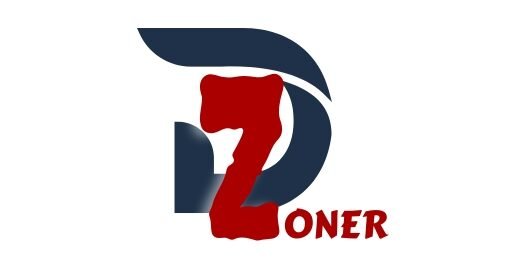Introduction to the Concept of “Influencer Snark”
In recent years, the term lainfluencersnark has gained traction, capturing the curiosity and attention of social media users across all age groups. But what exactly is lainfluencersnark? At its core, it refers to the witty, often biting commentary directed towards influencers and their online personas. This trend has surged as more people seek to express skepticism or critique over influencer content that they find inauthentic or superficial.
The allure of lainfluencersnark lies in its ability to challenge the pristine, edited lives that influencers project. For many, it’s a refreshing dose of reality amidst the curated perfectionism of social media. In this blog post, we’ll explore the origins and implications of lainfluencersnark, examining its impact on social media culture and its potential benefits and drawbacks for both influencers and brands. Whether you’re an influencer, a brand, or simply someone interested in social media dynamics, understanding lainfluencersnark is crucial in navigating today’s digital landscape.
The Impact of Influencer Snark on Social Media
The rise of influencer snark has significantly altered the landscape of social media. Users across platforms have found a community in sharing their candid, and sometimes critical, thoughts about influencers. This movement has democratized content critique, allowing everyday users to voice their opinions on the influencer economy.
Influencer snark can serve as a check on influencer behavior, encouraging more authenticity and transparency. When influencers are aware that their audience is scrutinizing their content through a lens of snark, they may be more inclined to present a genuine image. This can lead to a more honest dialogue between influencers and their followers, fostering trust and relatability.
However, the impact is not wholly positive. Influencer snark can also contribute to a toxic environment, where negativity and judgment prevail. The intent behind each comment can vary, ranging from lighthearted banter to targeted harassment, and discerning the difference is vital. When snark crosses the line into bullying, it can damage reputations and mental health, posing a significant challenge for those in the spotlight.
Understanding the Psychology Behind Engaging with Influencer Snark
Why do people engage with influencer snark? Psychologically, it taps into several human behaviors and desires. For one, it provides a sense of shared humor and community. Being part of the snark conversation can feel like being in on a joke, creating a bond among participants.
Additionally, snark allows individuals to express dissatisfaction with societal norms. Influencers often epitomize aspirational lifestyles, which can be alienating or frustrating to viewers who feel these standards are unattainable. Through snark, users can critique and deconstruct these ideals, providing a form of social commentary.
On a deeper level, engaging with influencer snark can also be a form of self-defense. By critiquing others, individuals may feel a sense of superiority or validation. This can be particularly appealing when users project their insecurities onto influencers, seeing them as representatives of what they lack. Recognizing these motivations helps us understand the broader cultural phenomena at play.
Positive vs. Negative Influencer Snark: Where to Draw the Line
While influencer snark can be entertaining and even constructive, it’s important to differentiate between healthy critique and harmful negativity. Positive snark involves constructive criticism that prompts reflection and improvement. It can highlight inconsistencies or problematic behavior while maintaining respect and empathy.
On the other hand, negative snark often devolves into personal attacks and shaming. This type of snark goes beyond critiquing content to targeting the individual themselves, which can be damaging and unproductive. It’s essential for participants in snark communities to be mindful of their language and intent, aiming to foster a culture of accountability rather than hostility.
Ultimately, drawing the line between positive and negative snark requires introspection from both snarkers and influencers. By promoting conversations that encourage growth and understanding, we can ensure that snark remains a tool for engagement and not division.
How Brands Can Leverage Influencer Snark to Their Advantage
Brands can harness the power of influencer snark by using it as a barometer for public sentiment. By monitoring snark, brands can gain insights into consumer perceptions and potential areas for improvement. This feedback loop can be invaluable in refining branding strategies and product offerings.
Additionally, brands that align with influencer snark can position themselves as approachable and in-touch. By acknowledging and engaging with snark in a playful manner, brands can build rapport with audiences who appreciate humor and authenticity. This approach requires a delicate balance, as brands must avoid appearing insincere or dismissive.
However, leveraging influencer snark is not without risks. Brands must be cautious to ensure that engagement with snark does not alienate influencers or lead to negative publicity. A thoughtful, strategic approach is essential to harness the potential benefits while mitigating potential pitfalls.
The Role of Influencers in Shaping Their Public Image in Response to Snark
Influencers are at the forefront of addressing snark directed towards them. To maintain a positive public image, influencers can adopt several strategies. Transparency and authenticity remain their strongest allies. By openly communicating with their audience and acknowledging imperfections, influencers can defuse snark and rebuild trust.
Engagement is another powerful tool. Influencers who actively participate in conversations around snark can demonstrate humility and willingness to improve. This approach fosters a sense of community and relatability, as followers appreciate influencers who listen and adapt based on feedback.
Despite these strategies, influencers must also establish boundaries to protect their mental well-being. It’s important for influencers to differentiate between constructive criticism and unwarranted attacks, focusing on the former while disregarding the latter. This balance allows influencers to address snark effectively while preserving their sense of self.
Tips for Managing and Responding to Negative Influencer Snark
Managing negative influencer snark can be challenging, but there are several effective approaches. Firstly, influencers should address the snark directly when appropriate. By acknowledging and responding to valid criticisms, influencers can demonstrate accountability and transparency.
It’s also beneficial for influencers to cultivate a supportive community. Encouraging positive interactions among followers can help drown out negative snark, creating a more balanced discourse. Influencers can actively engage with their audience through polls, Q&A sessions, and collaborative content to build a loyal and engaged following.
Finally, self-care and resilience are crucial. Influencers must prioritize their mental health and well-being to withstand the pressures of public scrutiny. This may involve seeking support from peers, mentors, or professionals. By maintaining a healthy outlook, influencers can effectively manage snark while remaining true to themselves.
The Future of Influencer Snark and Its Implications on Social Media Culture
The future of influencer snark is likely to evolve alongside shifts in social media culture. As platforms and audiences grow, snark will continue to play a role in shaping online interactions. It may become more sophisticated, with users finding new ways to engage in humorous and insightful critique.
For influencers, adapting to this evolving landscape will be critical. Those who can effectively manage snark and leverage it for growth will thrive, while others may struggle to maintain relevancy. By staying attuned to audience sentiment and trends, influencers can remain resilient in the face of changing dynamics.
Ultimately, influencer snark reflects a broader cultural shift towards transparency and authenticity. By fostering meaningful conversations and challenging conventional norms, snark can contribute to a more inclusive and dynamic social media environment.
You May Also Like: Deep Purple Fake Farewell Tour Captivates Fans Worldwide
Conclusion
Lainfluencersnark highlights both the challenges and opportunities of modern social media culture. While it can provide valuable feedback and entertainment, it requires careful navigation to avoid negativity and harm. Influencers, brands, and users alike must approach snark with mindfulness and empathy to foster a more constructive and authentic online community.
We invite you to share your thoughts and experiences with influencer snark in the comments below. Together, we can explore how this phenomenon shapes our digital interactions and enriches our understanding of social media dynamics.
FAQs
What is lainfluencersnark?
Lainfluencersnark refers to witty, often critical commentary on influencers and their content, reflecting user opinions and critiques.
How does influencer snark affect social media culture?
Influencer snark influences social media culture by promoting transparency and authenticity while also presenting challenges related to negativity and judgment.
Can influencer snark benefit brands?
Yes, brands can leverage influencer snark to gain insights into consumer sentiment and position themselves as approachable and in-touch with audiences.
How can influencers respond to negative snark?
Influencers can manage negative snark by addressing valid criticisms, fostering a supportive community, and prioritizing their mental well-being.
What is the future of influencer snark?
Influencer snark will continue to evolve with social media culture, shaping online interactions through humor, critique, and dynamic engagement.









